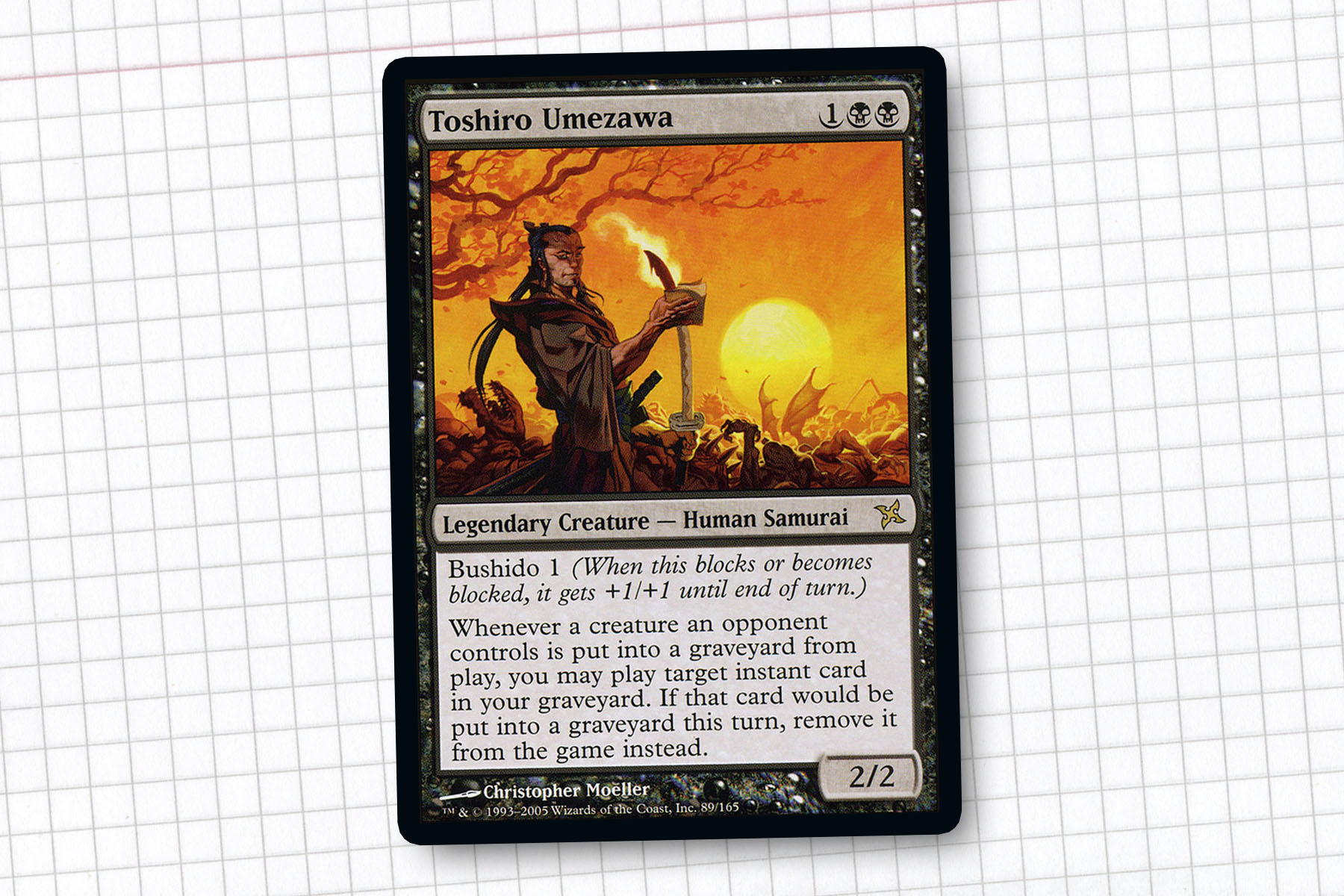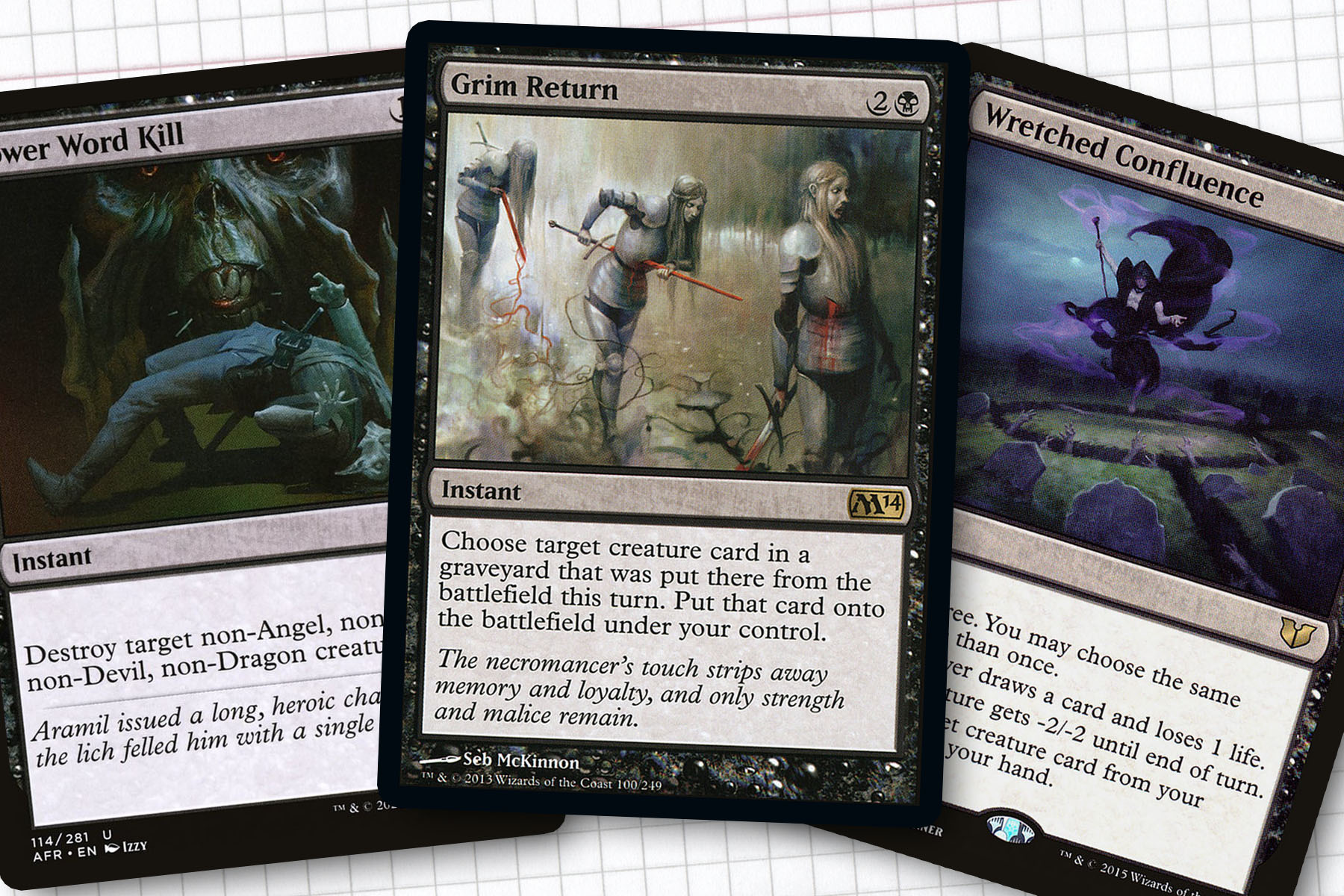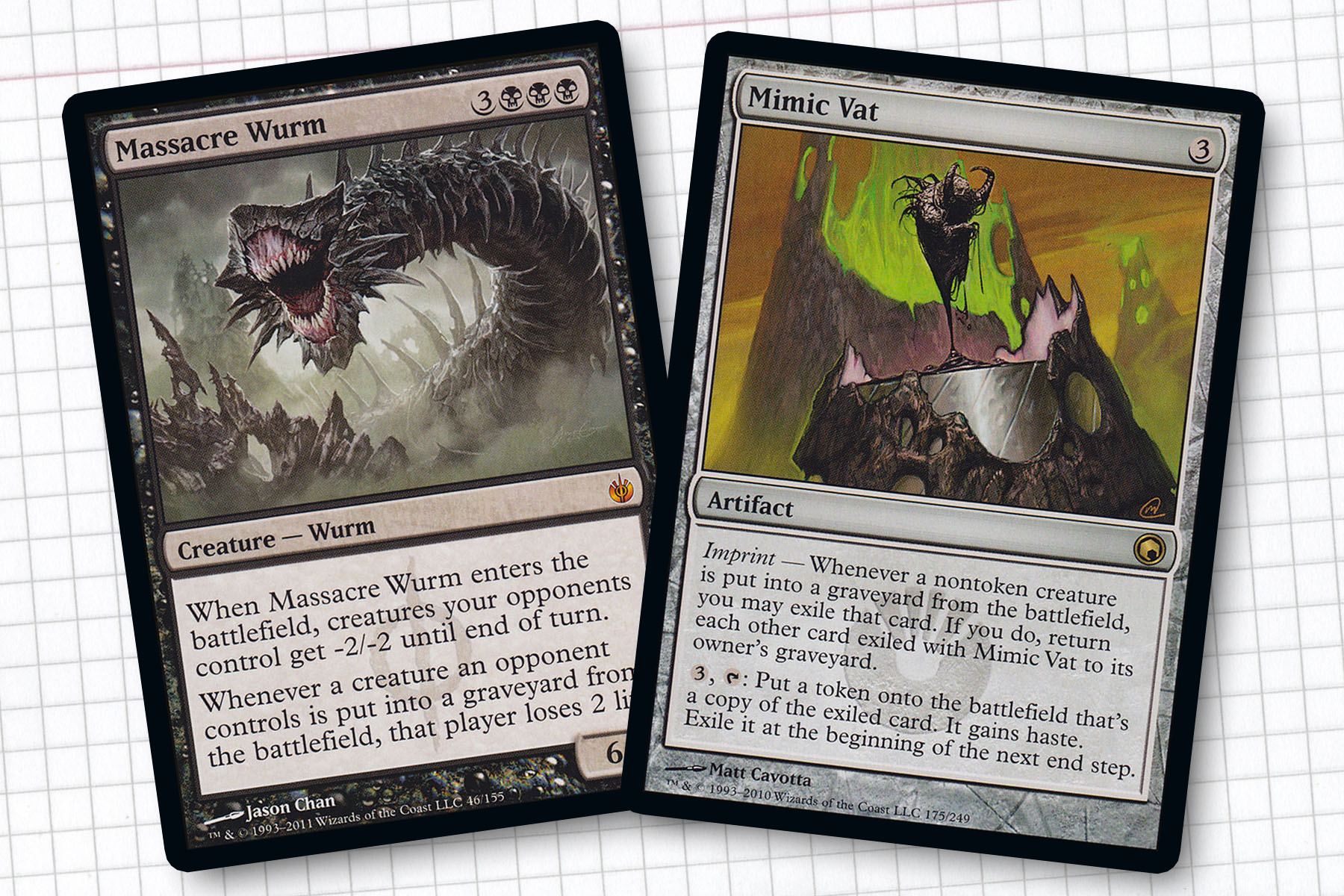I have never been very timid about my love for Champions of Kamigawa block. For all of its shortcomings in the card designs on a macro level, I was a huge fan of all of the legendary creatures, the setting being outside of the traditional idea for fantasy games of the era, and, of course, samurai. But I think the strongest factor to the plane was the three novels that told a story that grabbed my attention and kept me invested.
When it was announced that we would finally be returning to the plane of Kamigawa for a full set, nearly twenty years later, I was rather excited. To celebrate Kamigawa and focus on the decks that might never get attention after the fact, I wanted to spend some of the time between now and the kick off of preview season for Kamigawa: Neon Dynasty diving into the generals on hand from 2003. For this project, we get to exclusively focus on mono colored generals, as only one legendary creature from the block has a multicolor color identity.
This week, I chose to skew my journey through the color pie by starting in black, as to highlight Toshiro Umezawa, the hero of the block and one of my favorite mono black legends of all time. Not only is he a samurai, but he has a fascinating second ability that bewildered me in the younger years and inspires me today. We’ll be casting a lot of instant spells this week, all in an effort to remove our opponents in a myriad of ways.
Commander: Toshiro Umezawa
Creatures: Blood Artist, Chainer, Dementia Master, Crypt Ghast, Deathgreeter, Dreadhound, Falkenrath Noble, Fell Shepherd, Foulmire Knight, Gisa, Glorious Resurrector, Harvester of Souls, Massacre Wurm, Murderous Rider, Nirkana Revenant, Priest of Forgotten Gods, Sangromancer, Species Specialist, Syr Konrad, the Grim, Tormod, the Desecrator
Enchantments: Black Market, Grave Betrayal, Retreat to Hagra, Revel in Riches, The Meathook Massacre
Artifacts: Aetherflux Reservoir, Caged Sun, Coldsteel Heart, Corrupted Grafstone, Glaring Spotlight, Hammer of Nazahn, Jet Medallion, Mimic Vat, Oathkeeper, Takeno’s Daisho, Sol Ring, Thought Vessel
Instants: Cast Down, Consume the Meek, Dark Ritual, Drag to the Underworld, Echoing Decay, Fated Return, Foul Renewal, Go for the Throat, Grim Return, Heartless Act, Hero’s Downfall, Infernal Grasp, Malicious Affliction, Murder, Power Word Kill, Rain of Filth, Rise of the Dread Marn, Scour from Existence, Slaughter, Succumb to Temptation, Thrilling Encore, Vraska’s Contempt, Wretched Confluence
Sorceries: Bubbling Muck, Exsanguinate, Final Parting, Liturgy of Blood, Read the Bones
Lands: 26 Swamp, Arcane Lighthouse, Barren Moor, Bojuka Bog, Cabal Stronghold, Detection Tower, Field of Ruin, Ghost Quarter, Guildless Commons, Nykthos, Shrine to Nyx, Polluted Mire, War Room

A Fan Favorite Character
Due to his outlier nature within early Magic lore, I wanted to start my exploration of Kamigawa with our protagonist, Toshiro Umezawa. The Kamigawa block subverted the typical structure of a Magic story by having a black-aligned ronin samurai using blood magic as the protagonist, set against a white-aligned central villain who ruled Kamigawa under strict control. This was not a nuance that was made explicit to me when I first jumped into the world, only dawning on me with the printing of the card in Betrayers of Kamigawa. The idea of a hero that is doing the right thing, motivated by his own self interests was fascinating to me when I first read the three books that told Kamigawa’s story and still stands out as a significant example of how to make these characters heroic, even today.
As a card, I will admit I didn’t really understand Toshiro at first. I understood when the trigger worked, but I failed to comprehend how the chosen instant was cast. Am I paying a cost? If so, what cost? Nowadays, it’s easy enough to explain that, while Toshiro is in play, when a creature an opponent controls dies, you may immediately flashback an instant in your graveyard, where the flashback cost is its mana cost. While there are corner case situations, like Slaughter being able to use buyback, Toshiro feels relatively easy to introduce to a table.
All told, I see Toshiro as being a very formidable midrange general who can take utility and win condition creatures off the battle to clear the way for our own win conditions. I’ve never known any legendary samurai to be a particularly good fit for a Voltron general, which is why there is less energy put towards making Toshi scary in combat and more energy put into keeping an ample supply of instant speeds at the ready.

The War of Attrition
For this build, Toshiro is looking to play a longer game, taking out key threats and blockers when it is advantageous for our game. It should be no surprise then that we have packed our deck full of spells that act as removal, like Cast Down, Drag to the Underworld, Infernal Grasp, and Scour from Existence. These spells act as both enablers and resources over the course of the game. In practice, it’s sensible to assume we will not be casually chaining these spells together, though that is always an option.
With Black Market or Revel in Riches in the decklist to help provide us with the mana needed to cast additional spells over the course of the game, Aetherflux Reservoir is on hand, threatening to deliver a payload of damage at a moment’s notice.
For most games, it is important to look towards spells like Fated Return, Foul Renewal, and Grim Return as ways to break parody and come out ahead as our opponents are losing creatures. We don’t want to bank on the creatures we’re returning in this matter to be the deciding factors of the game; but if we can rebound from an enemy wrath effect by reanimating the most imposing creature in the graveyard, we lessen the chance of being caught on the back foot. We can destroy and reanimate creatures all we want, but we can also play into all the creatures dying through Rise of the Dread Marn and spells leaving our graveyard with Tormod, the Desecrator for the ever-important token strategy.

The Aristocrats
With what we have built it should not be a huge leap in logic to say that we are going to leverage a lot of aristocrat-adjacent cards. Mostly we will focus on cards that benefit when an opponent’s creature dies. Blood Artist, Deathgreeter, Falkenrath Noble, and Harvester of Souls are emblematic of how I wanted to use most of my creatures in the deck, generating small, repeated death triggers that will keep the game moving in the direction I want. This will hopefully mean that even if we find ourselves without Toshiro, we are not dead in the water.
In the middle of all of this, we have graveyard-friendly cards Grim Betrayal, Mimic Vat, Chainer, Dementia Master, and Gisa, Glorious Resurrector as sources of reanimation for the armies of dying creatures. In this way, hopefully we will be able to play the long game and continually apply pressure, even after we have thinned the ranks of each player.
Finally, Revel in Riches joins the other marquee finishers for the deck, Massacre Wurm and The Meathook Massacre. Both of these cards create immediate impact while generating additional effects going forward. In combination with Syr Konrad, the Grim or Dreadhound, the natural attrition during the course of the game should result in our life total stabilizing, while quickly disrupting our opponents.
Concluding Thoughts
I have never been one to gravitate towards objectively powerful generals. Instead I prefer generals that reward you for building around them, without having that strategy entirely fleshed out. While mostly fitting that bill, Toshiro Umezawa is also a pretty cool character that I imagine would look a lot different if designed today. One of the shortcomings of our first trip to Kamigawa is that we did not encounter many multicolored cards; while I appreciate the new territory a black-aligned hero was exploring, I would have loved to see what the character looked like with more colors to draw design space from.
I cherish Kamigawa, even with its shortcomings. Hopefully my exploration of the Kamigawa block can bring some appreciation to the plane before we reach Kamigawa: Neon Dynasty early next year. In our next installment, we will be exploring a mono-red general who will get our opponents’ blood boiling. I hope to see you there.
Ryan Sainio is a Graphic Designer who writes about EDH and the EDH community. He has been playing Magic: the Gathering since 7th Edition in 2002 and values flavorful and fun gameplay over competitively optimized decks.



